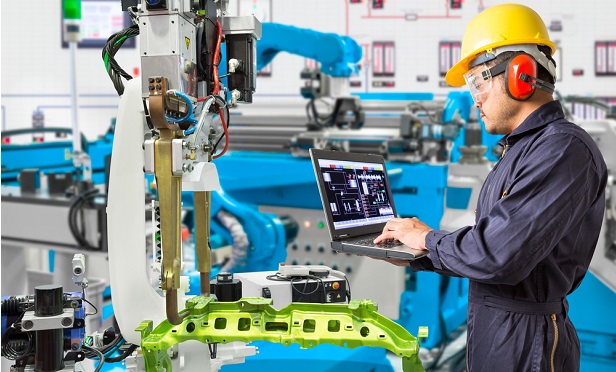 Thanks to the skills gap, fiveout of 10 skilled worker positions in U.S. manufacturing arevacant; skills are specific, require training and unique skill setsand can take months to fill. (Photo: Shutterstock)
Thanks to the skills gap, fiveout of 10 skilled worker positions in U.S. manufacturing arevacant; skills are specific, require training and unique skill setsand can take months to fill. (Photo: Shutterstock)
In a tight labor market, it could be music toworkers' ears to hear that there are so many skilled jobs availablein the manufacturing industry—but not to employers'ears.
|Yet, according to a new 2018 skills gap study by Deloitte andThe Manufacturing Institute (the social impact arm of the NationalAssociation of Manufacturers), 2.4 million skilled jobs areprojected to go unfilled by 2028. Currently the number of openslots is about 488,000. This gap, the projection adds, could meanthat $454 billion in manufacturing GDP could be at risk in 2028, ormore than $2.5 trillion over the next decade.
|Related: Who's responsible for the employee skillsgap?
|In its earlier study, Deloitte and the Institute projected 2million jobs going vacant between 2015 and 2025.
|“Manufacturers in the United States are experiencing some of thehighest levels of growth we've seen in decades, yet the industryseems unable to keep up with the resulting rebound in job growth,”Paul Wellener, vice chairman, Deloitte LLP, and U.S. industrialproducts and construction leader, said in a statement.
|Wellener added, “With nearly 2 million vacant new jobs expectedby 2028, compounded by 2.69 million vacancies from retiringworkers, the number of open positions could be greater than everand might pose not only a major challenge for manufacturers but maythreaten the vitality of the industry and our economy.”
|It's not as if industry is unaware, or not worried, with 73percent of manufacturers citing this massive worker shortfall astheir top concern, according to the NAM's latest “Manufacturers'Outlook Survey.” But thanks to the skills gap, five out of 10skilled worker positions in U.S. manufacturing are vacant; skillsare specific, require training and unique skill sets and can takemonths to fill.
|The report highlights such jobs as skilled production workers,supply chain talent, digital talent, engineers, researchers,scientists, software engineers and operational managers.
|The study identifies the top reasons there are so manyvacancies: they include negative perceptions of the manufacturingindustry (45 percent), followed by shifts in skill sets thanks toadvanced technologies (36 percent) and retirement of baby boomers(36 percent).
|Companies that will be hardest hit by this over the next threeyears will be those that are maintaining or increasing productionlevels to satisfy growing customer demand (51 percent). This willlikely also pose a challenge for nearly half of manufacturersresponding to new market opportunities and those increasing growthas measured by revenue (47 percent each), the report says.
|Some of the ways companies are trying to cope include addinglearning and development programs (39 percent); being more flexiblein hiring (77 percent); training candidates on the job (65percent); and even turning to retirees—with a pool of 2.69 millionworkers retiring from manufacturing jobs in the next 10 years, thislast is a way for employers to hang on to the collective wisdom ofolder employees.
|Last but not least are the addition of automated technologies(26 percent), relying more on technology (60 percent), raisingwages (83 percent) and offering hiring bonuses (8 percent).
|Read more:
- Prepare for a skills shift: what employers need todo to adapt their workforce
- Poor communication skills hinder millennials inworkplace
- Expanding the talent pool: 10 groups employers areusing to fill vacancies
Complete your profile to continue reading and get FREE access to BenefitsPRO, part of your ALM digital membership.
Your access to unlimited BenefitsPRO content isn’t changing.
Once you are an ALM digital member, you’ll receive:
- Critical BenefitsPRO information including cutting edge post-reform success strategies, access to educational webcasts and videos, resources from industry leaders, and informative Newsletters.
- Exclusive discounts on ALM, BenefitsPRO magazine and BenefitsPRO.com events
- Access to other award-winning ALM websites including ThinkAdvisor.com and Law.com
Already have an account? Sign In
© 2024 ALM Global, LLC, All Rights Reserved. Request academic re-use from www.copyright.com. All other uses, submit a request to [email protected]. For more information visit Asset & Logo Licensing.








